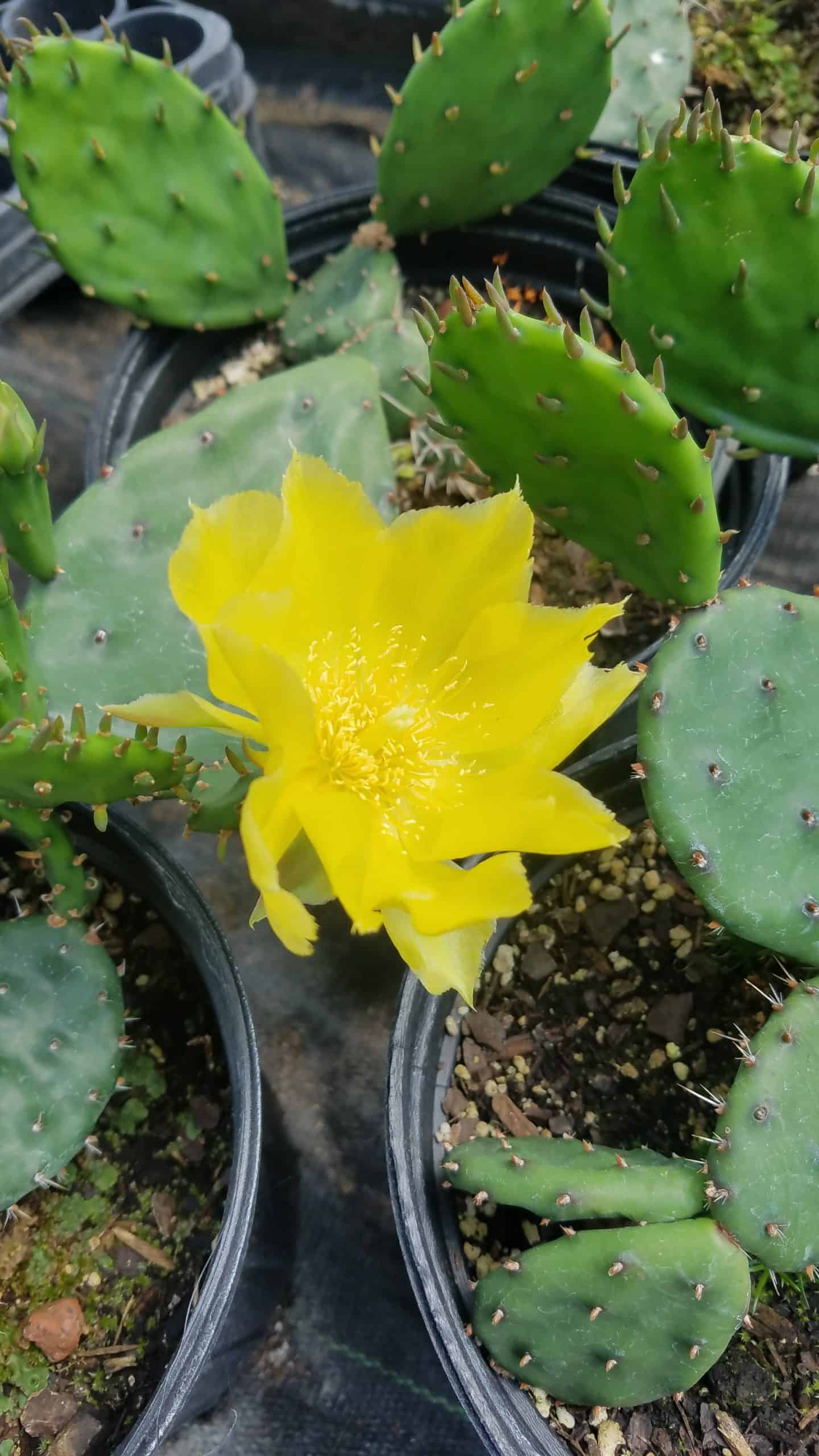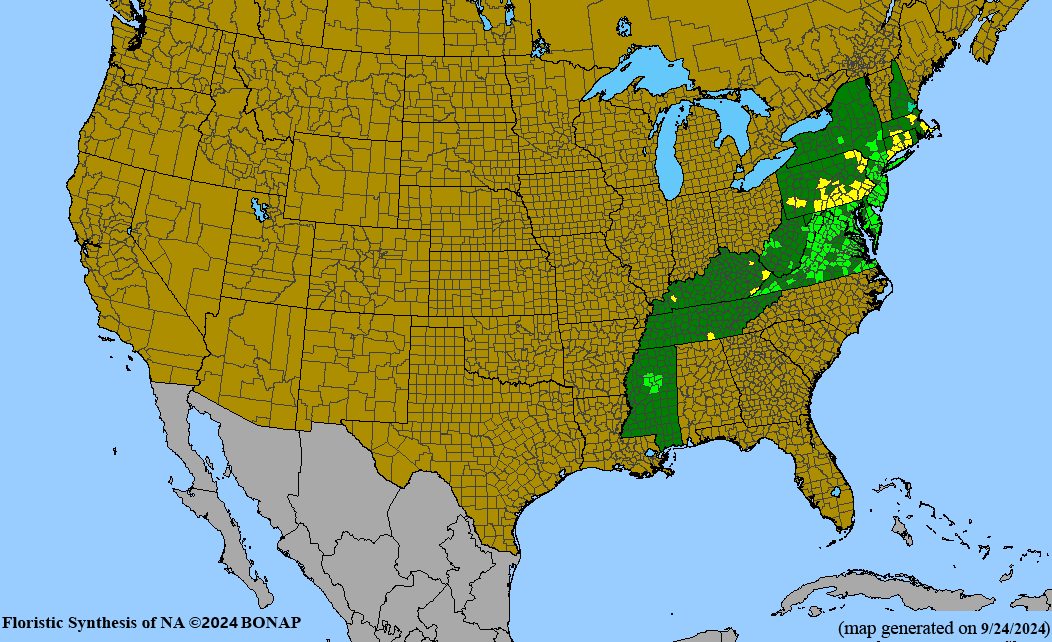Opuntia humifusa
Eastern Prickly Pear, Devil's Tounge






General
Prickly pear is a native cactus species to the Eastern and Central United States. It is a great ground cover for dry areas with coarse or rocky soils. It produces showy, yellow flowers and pink, edible fruits. It is tolerant of drought and freezing temperatures, but must be planted in full sun and well-drained soils.
Plant Description
Evergreen cactus with many spines evenly spaced on the wide, flat pads. The pads are succulent, rounded, and can be 2-7'' long and 1-5'' wide. Showy yellow or yellow and orange flowers. Thick, edible red fruit grows from the edges of the outermost pads. Grows in clusters close to the ground and usually less than 1' tall.
Height (ft)
0.25-1.5'
Soil moisture
Dry
Soil types
Coarse or rocky mineral soils
Wetland indicator
UPL
Shade tolerance
Intolerant, Full Sun
Bloom color
Yellow
Bloom period
Late Spring to Early Summer
Drought tolerance
High
Salinity tolerance
Medium
Range
Eastern and Central United States. Upstate New York and Massachusetts to Florida, west to Texas, Oklahoma, and Kansas. This species is state-listed as a species of special concern in Connecticut, endangered in Massachusetts, vulnerable in New York, and rare in Pennsylvania.

Kartesz, J.T. 2024. Floristic Synthesis of North America, Version 1.0. Biota of North America Program (BONAP) [website http://bonap.org/]
Additional Information
According to the BRIT - Native American Ethnobotany Database, the Dakota, Lakota, Pawnee and other tribes would use this plant as a starvation food or in their winter diet. They would remove the bristles and eat the fruit raw or stewed. The Lakota also used the cut stems from this plant to treat rattlesnake bites. Pawnee would also use the stem juice to fix colors on painted hides to fix the coloration of them.
